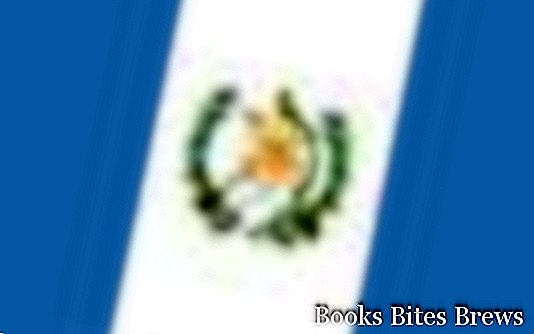Practical tourist information Guatemala, including all the things to know before leaving for a trip or vacation in this state of Central America.
Guatemala in a nutshell
- Capital: Guatemala City
- Area in sq. Km: 108,889
- Population: 14,600,000 (first half 2006)
- Religion: Catholic, Pentecostal, mixed Mayan and Catholic cults
Where is it
Guatemala, a country in Central America, faces the Atlantic Ocean to the east and the Pacific Ocean to the south west. It borders Mexico to the north and west, Belize to the north east, Honduras to the east, El Salvador to the southeast.
The territory is mostly occupied by reliefs, which constitute the extension of the Mexican Sierra Madre.
The side of the Pacific Ocean is dominated by volcanic reliefs (Atitlàn, Tajumulco, Tacanà, Fuego, Agua, Pacaya, Santa Maria) some of which are still active.
Despite frequent seismic phenomena, the slopes of these hills are densely populated, thanks to the medium-high altitude, which mitigates the tropical climate and also thanks to the presence of very fertile soils.
To the north lies the limestone plateau of the Petén, a low and uniform region covered with forests (in the past it was inhabited by the Mayans).
A flood plain formed by the rivers that flow from the Volcanic Cordillera characterizes the Pacific coast.
Hydrography
The most important river is Motagua which flows on the Caribbean side, in the Gulf of Honduras, and is partly navigable, while the rivers that pay to the Pacific Ocean are short and torrential.
In the Karst region of Petén, which has an underground hydrography, there is Lake Petén Itzà. Among the beautiful lakes of Guatemala the largest are the Izabal and the Atitlàn.
Climate
In Guatemala, the climate is hot and humid in the flat regions (Tierras Calientes), on the coast of the Pacific Ocean and in the Petén region.
In the medium height regions (Tierras Templadas), plateaus and mountain ranges, temperatures are more moderate; in the highest regions (Tierras Frìas) above 2000 meters in height, temperatures drop and the temperature range between day and night is very pronounced.
Recommended readings- Brasilia: what to see in the capital of Brazil
- Mexico: useful information
- California (United States): what to see
- Iowa (United States): what to see in the 29th state
- Arches: what to see in the national park
The dry season covers the months from November to April; May to October is the rainy season.
Population
More than half of the population is made up of Indians (descendants of the Mayas), the remainder is composed mostly of ladinos (mestizos descended from the union between Guatemalans and Spanish colonizers, who occupy privileged positions in society compared to the Indians) and minorities of Creoles (descendants of the Spaniards), zambos (descendants of the union of Negroes and Indians), Negroes and mulattos.
Time zone
In Guatemala it is necessary to move the clock hands 7 hours behind Italy. (8 hours behind when there is daylight saving time in Italy).
Spoken language
Guatemala's official language is Spanish. In addition there are about 20 Mayan languages and dialects (including quiche, cakchiquel, ketchi, garifuna, mam and xinca).
Economy
Guatemala has a poor economy, which is mainly based on the export of agricultural products such as coffee, bananas, sugar cane, tobacco, cotton and cocoa, coming from the plantations owned by the ladinos, who own large land estates. .
Crops are imposed by foreign multinationals, which together with the ladinos, derive the greatest benefits.
The few and less fertile lands remain with the Indians, who are forced to go to be exploited on the plantations in order to survive.
For domestic consumption, rice, beans, corn and wheat are grown.
The industry is lacking, the most developed sector is the food and canning sector, in addition to the textile and paper sector (approx. 40% of the territory is covered with forests).
Despite major tourist attractions, the tourism sector is hampered by internal security issues.
When to go
The best time to visit Guatemala is the dry season, from November to April.
Necessary documents
To enter Guatemala you need a valid passport.
For tourist reasons, an entry visa is not required for a maximum stay of 90 days, for other activities other than tourism, it is necessary to contact the Embassy or consular services present in Italy, even for periods of less than 90 days, or if already in the country, the Italian embassy in Guatemala.
Phone
- To call from Italy to Guatemala the international prefix is: 00502
- To call from Guatemala to Italy the international prefix is: 0039
There are internet points and internet cafes.
Electricity
The electric current in Guatemala is 110 volts, therefore an adapter is required.
Money and credit cards
Guatemala's currency is the Quetzal. The US dollar is a currency that changes easily (in banks, at the airport).
The main credit cards can also be used; as far as the ATM withdrawal is concerned, it is possible to do it only in the banks of the most important cities.
How to get
Guatemala City and Flores are the only cities served by air links.
There are no direct flights from Italy to Guatemala.
The flights of the Airlines: Continental Airlines, American Airlines, United, Delta, pass through American airports.
In general, the stopover in the United States (Miami, Houston, Atlanta, Los Angeles, Dallas) is preceded by a first stopover at a European airport (depends on the European connection company).
Guatemala can also be reached by stopping over in Mexico, with various airlines, including Lufthansa, Air France, Iberia. Only Iberia has direct flights to Guatemala City via Madrid.
Vaccinations
There are no mandatory vaccinations to enter Guatemala, however malaria prophylaxis and hepatitis A and B vaccine are recommended.
Drink only bottled drinks and water, without adding ice, and avoid raw foods and vegetables.




